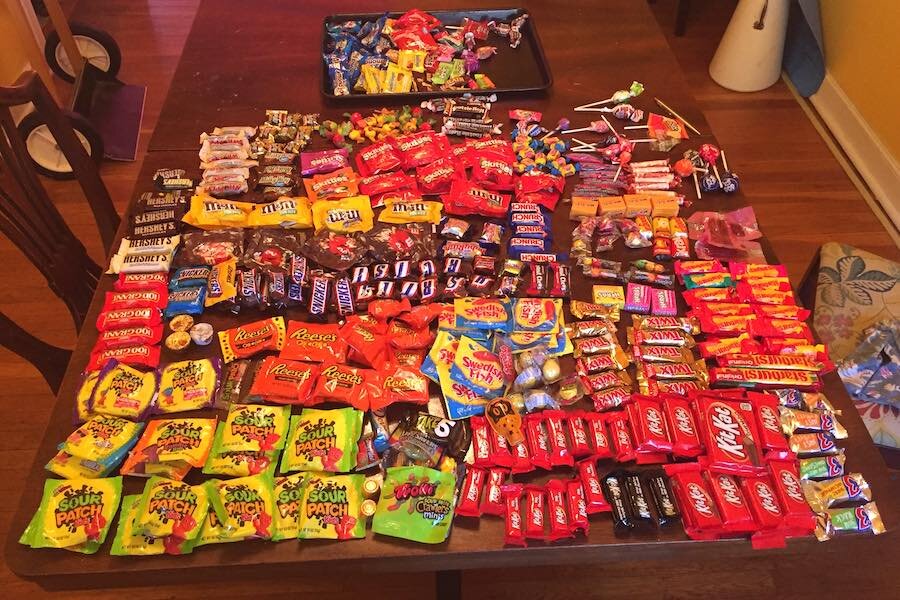Halloween Candy Inventory
Players: 1
Ages: 4 and up
Cost: Free!
Math Ideas: Data visualization, attributes, counting collections, units
Questions to Ask:
How did you sort your candy?
Can you sort your candy a different way?
Did you sort your Halloween candy as a kid? Did you count how many pieces you got, splitting them into groups based on type or color or size? Did you alternate between eating good candy and bad, making sure you had some good ones left over at the end?
Because if you did, you used a ton of mathematical skills. And your kids can develop those same skills with a little activity I call Halloween Candy Inventory.
How Many Pieces?
This game is extremely easy to get your kids to play. After you get back from trick-or-treating, ask your kids "Want to see how much candy you got?"
Find a big open spot on the carpet and dump out all the candy. This inevitably makes a big impression: whoa, that's a lot of candy.
In early elementary school, kids spend a lot of time on counting collections: they learn how to keep track of large numbers of objects, how to group by tens or fives, and how to make sure they haven't mis-counted by accident.
The benefit of counting Halloween candy is that your kids actually want to know the answer! They're not doing it because their teacher asked; they're counting so they can brag at school tomorrow about how big their haul was. So they'll really focus on making sure their total is correct.
Sorting Your Candy
Once your child has a total number of candies, it's time to sort them! Just ask your kid "How should you sort your candies?"
It's important to let your kid decide how to sort their candy. They need to find an attribute that they consider to be important and use that as their sorting mechanism. Some kids will sort their candy into categories of chocolate, fruity, sour, and so on. Other kids might sort by the color of the packaging. Maybe your child decides to sort by "candy I like" and "candy I don't like."
Regardless of how they sort the candy, ask them about their process. Find a candy that might be controversial: Smarties have a clear wrapper, so which color should they belong with? Is clear a color?
Then you can give them a new challenge: "Now sort your candy a different way, but don't tell me how you sorted it. Let me guess."
This is really fun, since your kids might try to stump you with a subtle attribute that you might not initially recognize. Then you can sort the candy and get them to guess!
Is this game mathematical? Absolutely! Mathematicians are constantly sorting and categorizing objects, numbers, sets, and shapes according to attributes. This game is just a fun, creative version of that process. It's not numerical, but math is about more than numbers.
(Thanks to Adrianne Burns for the awesome photos!)
Candy Bar Chart
Another activity you can do is to make a candy bar chart. Get your child to choose some candies that she got a few of: M&Ms, Snickers, Nerds, and so on. Stack them in parallel lines along the carpet. Ask them: "Can you tell, just from looking at your lines, what you got the most of?"
This is an informal bar chart, one of the most common ways that we visualize data. But be careful! Your child's bar chart could be misleading.
For example, look at the image at right. Does this child have more Crunch bars or more Milky Ways? In fact, they have three of each, but they way that they stacked the candy makes the Crunch line appear longer.
These sorts of imprecise issues are actually a great opportunity for a conversation! Just be sure to look for those opportunities while you and your kids are sorting and re-sorting their delicious data!





